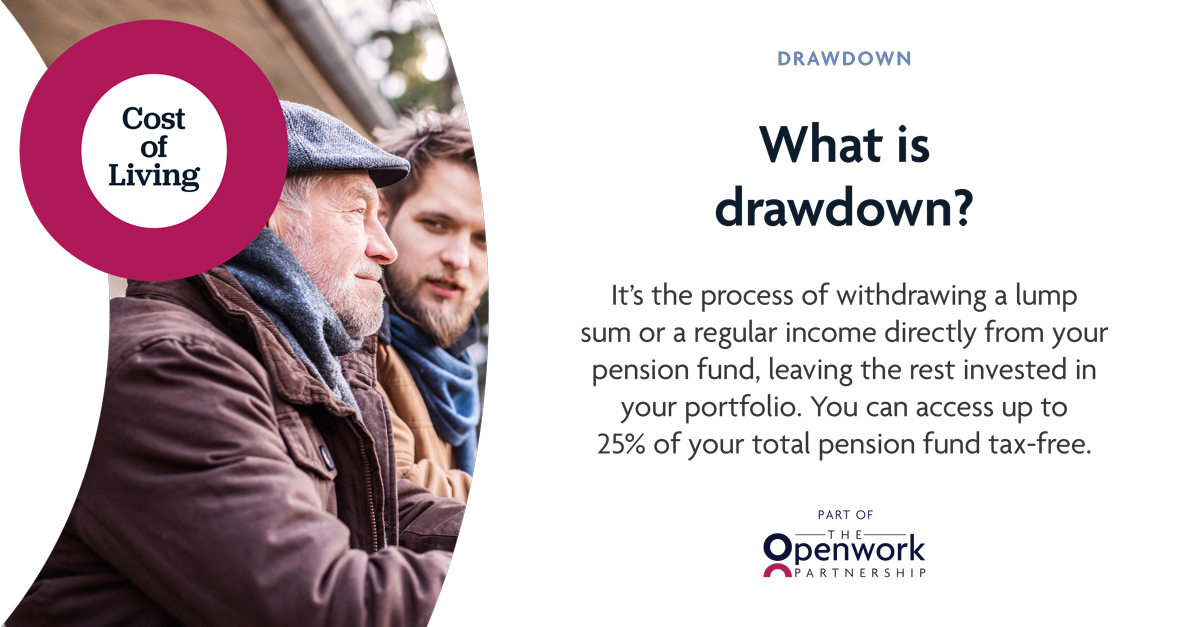Is Drawdown Right for You? Two Important Questions to Consider
Posted by Rebecca Harbrow on Wednesday 18th October 2023.

If you have a defined contribution pension, you can access your retirement savings in a variety of ways. One of those options is drawdown – a flexible approach for dipping into your savings when you need to. Read on to learn more about it.
1. How much income are you likely to need throughout your retirement?
Your specific circumstances will influence how much income you need through retirement and the method you use to access your pension savings. Cashflow modelling can help you to see if your savings are sufficient to support you throughout your life. Your financial planner can input data such as your current assets and savings, key event dates such as your expected retirement date, and any financial commitments you have now or in the future.
To forecast your future income, the software makes assumptions about the expected returns on investments, and how inflation might change things.
By regularly reviewing your cashflow model, you will understand how much income you are likely to need. We can help you to decide the best options for accessing your pension.
If your income needs are likely to vary throughout your retirement, drawdown might be an appropriate choice.
It’s also important to be realistic about any later-life care costs you might require, so that you can plan effectively.
2. How long will your pension need to last?
For people living in the UK today:
- A man aged 55 has an average life expectancy of 84 years, and a 1 in 10 chance of living to age 97.
- A woman aged 55 has an average life expectancy of 87, with a 1 in 10 chance of living to age 99.
So, if you decided to access your pension at age 55, it may need to last you for more than 40 years.
One theory for ensuring your pension fund lasts long enough using drawdown is ‘the 4% rule’. As a rule of thumb, you take 4% of your total pension fund in year one – the gross figure should include the cost of fees and taxes – then take the same amount of money each year thereafter, adjusting for inflation.
Since 4% may not be appropriate for your personal circumstances, it’s important to consult your Financial Planner on the withdrawal rate that is right for you. When you take a lump sum through drawdown, the remainder of your pension will need to be invested, so a further consideration is the fund that you will invest in.
The value of this investment and any income from them can fall as well as go up, so you may also wish to set aside some money in cash or buy an annuity to provide a safety buffer in the event of market volatility.
Life events might change the level of risk you wish to take with your investments, so you should review your portfolio with us on an annual basis.
What is drawdown?
Drawdown is the process of withdrawing a lump sum or a regular income directly from your pension fund, leaving the rest invested in your portfolio. There are some important tax implications to consider with drawdown.
You can access up to 25% of your total pension fund tax-free. If you wish to withdraw more of your fund, you will pay Income Tax on anything above the 25% threshold. This means that taking large sums of money from your pension could push you into a higher tax bracket.
Pensions will usually fall outside of your estate for Inheritance Tax (IHT), provided they have not been moved out of your pension or drawdown fund. If you die after the age of 75, any income your beneficiaries receive from your pension will be taxed at their usual rate.
An annuity might be more appropriate for you
If drawdown isn’t right for you, buying an annuity might be a suitable alternative. Annuities usually guarantee an annual income for life that you can buy using a lump some from your pension, however some annuities have a fixed term so the income may not last the full length of your life. Some annuities pay a fixed amount while others rise with inflation.
Annuity rates have increased by 20% in the twelve months to June 2023, with a total increase of 48% since the start of 2022, making them an attractive proposition for those looking for financial security in retirement.
Is-drawdown-right-for-you-2-important-questions-to-consider (1).pdf
The value of investments and any income from them can fall as well as rise and you may not get back the original amount invested.
Past performance is not a guide to future performance and should not be relied upon.
HM Revenue and Customs practice and the law relating to taxation are complex and subject to individual circumstances and changes, which cannot be foreseen.
Approved by The Openwork Partnership on 04.10.2023
Please note: by clicking this link you will be moving to a new website. We give no endorsement and accept no responsibility for the accuracy or content of any sites linked to from this site.